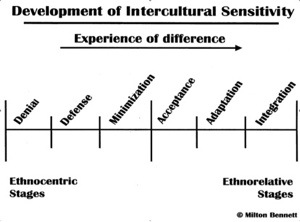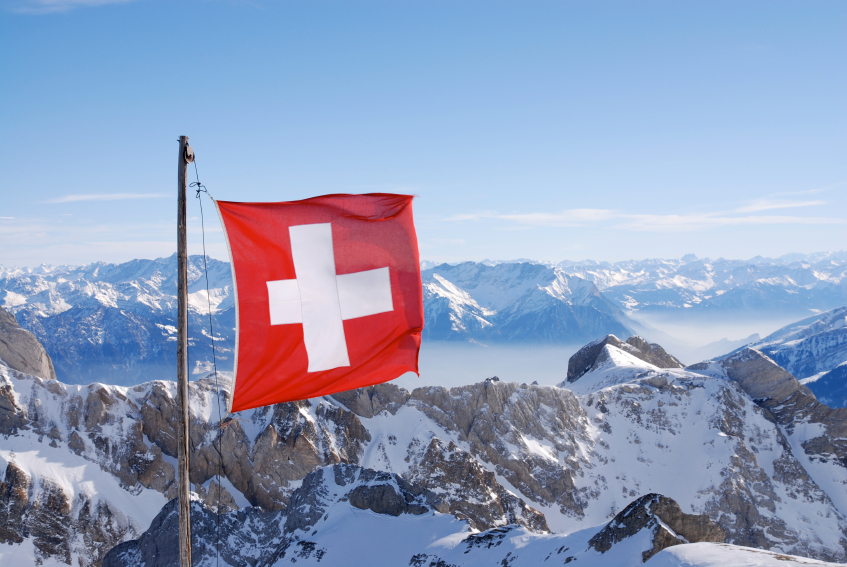Today I would like to take some time to talk about the so-called “Bennett scale” also
known as the DMIS, the “Developmental Model of Intercultural Sensitivity“. This model, developed by Dr. Milton Bennett in the late 80s, serves as a framework to explain the reactions of people to cultural
difference.

As shown above, the experience of difference as a function of your own perception moves through different stages, from “ethnocentrism” to “ethnorelativism“. The first term simply means that you experience your own culture as central and the second that you actually experience your culture in the context of other cultures. The more interculturally competent you are, the more you would find yourself on the right side of the diagram.
The six distinct kinds of experiences on the continuum of development are called (following Dr. Bennett’s explanations which can be found here):
After reading this you might want to challenge yourself and find out where you would be in this model. Which perception of yourself and others around you do you have and how competent do you deal with cultural difference?
When I was in Milano with Dr. Bennett a couple of weeks ago, it struck me that this model allowed me to finally understand what I had experienced during the course of my life and why I had felt the way I did. I actually went through all of the different perspectives myself, learning and changing views, to finally aquire competence and by that a kind of “peace” and acceptance within myself.
If you are reading my blog since a while you might know that I grew up in Belgium with German parents and wthin a completely European and multilingal environment as I went to the European School. Subsequently I then chose a European study path and an international career which now make me to a sellf-declared “chameleon“.
As it did for me, maybe this model can help you too, on your path to understanding who you are and where you want to be! The good news is that intercultural competence can be learned. As an intercultural coach and a mindful leader I can accompany you on that path if you want to….
Looking forward to reading your comments and/or to hearing from you! Jenny

